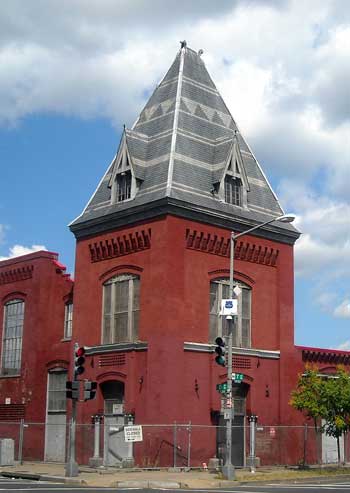D.C . PLANS FOR PRESERVATION AMID POPULATION EXPLOSION
How does a historic, monumental city with a defined border and building-height limit accommodate the influx of another 150,000 people over the next two decades? For District Mayor Muriel Bowser and planning director Erik Shaw, who spoke at an event at the Howard Theater, a major part of the answer is adaptive reuse, which involves transforming a building or site into some new use it wasn’t originally designed for. This approach enables cities to preserve some of the original character and feel of a place while updating it for contemporary realities.
Washington, D.C. has gained in population since 2000, when it hit a low-point of 572,000. The city now has 658,000 residents. Since 2000, there has been 150 million square feet of new development, much of it in the city’s 46 historic districts, to accommodate all the new residents, up to 1,000 people per month. Shaw said city planners have largely “maintained the integrity of the place, but it has been a balancing act.” And this balancing act will only get more difficult as the population is expected to increase a further 20 percent.
Mayor Bowser said D.C. needs to plan decades ahead for the expected population explosion. She admitted there will be big changes — “nothing stays the same.” Increased development may mean more “pressure,” particularly for low-density areas now being retrofitted to become higher density. Higher density development and less parking means greater strain on already over-taxed public transportation systems. But to create a new balance, Bowser’s administration is undertaking a comprehensive plan that will build on “examples from the past that were respectful of our values.”
One example from today, which was highlighted by a panel that followed Bowser and Shaw, is the new O Street Market, an adaptive reuse project in the Shaw neighborhood of D.C. O Street Market, a charismatic Victorian building, opened in 1881, with ample light, ventilation, and easy-to-clean sanitary surfaces. In 1968, the market closed amid the riots that roiled the city after the assassination of Martin Luther King, Jr. In the early 1970s, it was restored and reopened as a market for vendors, with a Giant supermarket coming in next door. In 1993, the market was added to the National Register of Historic Places, but by then, it had already become a symbol of the city’s “urban decay and dysfunction,” as eight people were shot in and around the building in one particularly bloody incident, writes The Washington Post. Vendors fled the marketplace amid rampant drug violence.
In 2001, a few developers made a bet the neighborhood would come back and decided to make an investment in the then-decrepit building. Roadside Development, along with Madison Retail Group, purchased the building, but, just a few years later, the old market’s roof collapsed in a snow storm. Richard Lake, Roadside Development, said the setbacks didn’t stop them, as the “community had a clear vision of what they wanted.” However, it still took more than 7 years before the D.C. Zoning Commission, Historic Preservation Review Board, and planning department approved the $325 million expansion of the market into the City Market at O, a multi-use development.
What was once a empty building with a collapsed roof was reopened as the largest Giant supermarket in the district in 2013. According to Keith Sellars, president, Washington DC Economic Partnership, this is a major success story. “10-15 years ago, we had to beg Giant to come to the core of D.C. But now they want a historic, authentic building for their 78,000-square foot flagship.”
Within City Market at O, there’s a 90-unit senior housing building that was filled up within weeks of opening and already has a multi-year wait list, along with a 555-unit market price apartment complex, with 550-square-foot one-bedrooms that go for a whopping $2,700. There’s a 182-unit hotel run by Cambria Suites. And another affordable housing building is in the works, with an additional 142 units opening in 2017. Just last year, the entire development won the Urban Land Institute’s global award for excellence competition.
Architect Shalom Baranes, who created 50-60 different architectural models of the revitalized O Street Market over the years before it was approved, said the developers and architects “brought their best game to a culturally-rich neighborhood.” The new Giant in the shell of the Victorian building well “juxtaposes modern and traditional.”
Meanwhile, housing prices just keep going up in gentrifying Shaw, which was 25 percent white in 2000 and is now more than half white. Mayor Bowser’s vision is of a “world-class, inclusive city,” and, in Shaw, she told The Washington Post, “it’s not too late for this to be a neighborhood where low-income and expensive housing exist side-by-side over the long term.” Her administration is investing $100 million in an expanded affordable housing trust fund, which helps tenants purchase their older, rent-stabilized apartments before they are sold and redeveloped. But as can be seen in the multi-year waiting list for the 99-unit senior housing built at City Market at O and so many other subsidized housing services, demand far exceeds supply. For a share of the city’s population, inclusion only happens with more affordable housing. Without inclusion, there will be no rich cultural heritage to preserve alongside the adapted old buildings.









Follow Us!